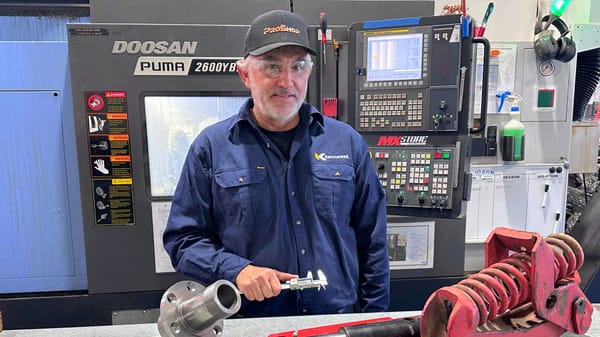Retirement villages struggle to keep up with demand amid housing shortage
A shortage of suitable housing has prompted Murraylands residents as young as their 50s to try and secure some of the limited vacancies in local retirement villages.

This post was originally published behind Murray Bridge News’ paywall. Paywalled posts are unlocked four weeks after publication. Can’t wait that long? Subscribe here.

Retirement villages are struggling to keep up with demand amid a housing shortage in the Murraylands.
Waiting lists are rapidly increasing and managers have been inundated with requests for residences from locals looking to downside or priced out of the ordinary rental market.
Murray Heights Lutheran Homes manager Delton Schiller said his village was full.
He wished his organisation could do more to help the community.
“We’re building more properties at our Murray Bridge location, and it would be good to have some government assistance or benefits to fast-track our construction, but we’re a not-for-profit, so we don’t qualify,” he said.
“Our business has to sustain itself from its current model, which is to make money from the capital of selling houses.
“The government should look into developing more budget housing, creating mini communities to help people get through the crisis.”

Waterford Estate village manager Peter Elphick said he had never seen anything like it in his 20 years in the sector.
“We have been full for about 18 months now, and during that time have had a steady flow of 12-15 houses to rent each year,” he said.
“As soon as a resident moves out, we refurbish the house and have new people move in straight away … it’s been flat out.”
One factor demonstrating this demand had been the drop in the age of the residents.
“Gone are the days of the being retired and moving into a village at 75, now a lot of the residents are people in their late 50s or early 60s,” Mr Elphick said.
“People can get a really good price for their homes at the moment, and a lot of our residents want to downsize and like to travel, so knowing they can have somewhere to base themselves that will be looked after while they’re away is a huge incentive for them.”

Murray Lands Retirement Village manager Sandra Bourke said she had noticed similar trends.
“Prior to COVID-19, we’d be lucky to have to have one request a month, whereas now it has been one or two a week,” she said.
“At the moment we are full … as soon as someone goes out, someone new comes in.”
There were two main reasons people sought places in retirement villages, she said: either they were looking to downsize, or they could no longer live in a rental property due to rising costs or landlords looking to sell.
At Murray Lands Retirement Village, Ms Bourke said, there were more than 50 people on the waiting list for a rental property and almost 20 waiting to purchase a property.
“The lack of rental properties available in the community has impacted everyone,” she said.
“We haven’t increased our fees this year to match the rising cost of living; we’re trying to keep that the same while still working within our budget.
“It would be great if the government helped retirement villages expand … if they came to us and said they wanted to build a block of units on our land for us to rent out, that is something we would look into.”

Murray Mallee Aged Care CEO Anna Howard said retirement villages played a critical role in the community.
“Retirement villages offer a sense of community and security,” Ms Howard said.
“We haven’t been inundated with requests, although we have felt the housing crisis through our employees, when someone’s rental property is sold and they struggle to find a new place to live … so we know it’s difficult in the wider community.”
Warner Close managers Scott and Stella Coppin, who live on site, said having someone close by offered residents “peace of mind”.
“It’s the sense of security and safety that we offer,” Ms Coppin said.
“That’s makes it different to just living in another two-bedroom unit somewhere in the general community,” Mr Coppin said.





